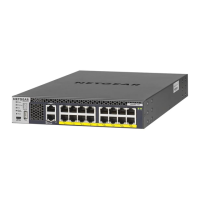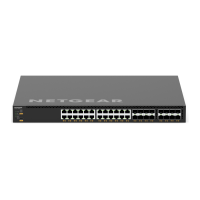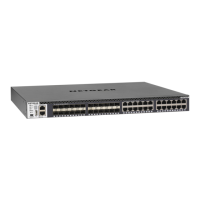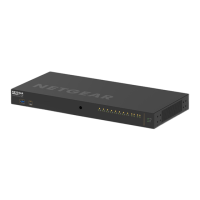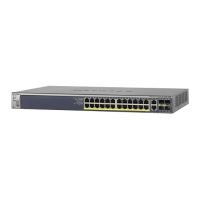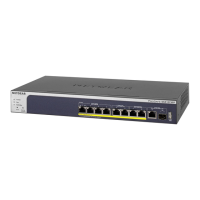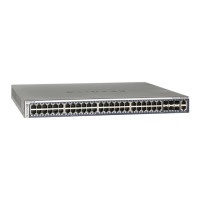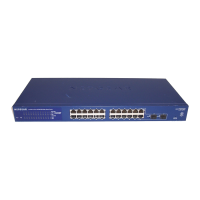Manage Device Security
586
M4300 Series and M4300-96X Fully Managed Switches User Manual
The following table describes the nonconfigurable information displayed on the page.t
Set Up and Manage Access Control Lists
Access control lists (ACLs) ensure that only authorized users can access specific resources
while blocking off any unwarranted attempts to reach network resources. ACLs are used to
provide traffic flow control, restrict contents of routing updates, decide which types of traffic
are forwarded or blocked, and above all provide security for the network. ProSafe Managed
switch software supports IPv4, IPv6, and MAC ACLs.
You first create an IPv4 based or IPv6 based or MAC-based ACL ID. Then, you create a rule
and assign it to a unique
ACL ID. Next, you define the rules, which can identify protocols,
source, and destination IP and MAC addresses, and other packet-matching criteria. Finally
,
use the ID number to assign the ACL to a port or to a LAG.
Use the ACL Wizard to Create a Simple ACL
The ACL Wizard helps you create a simple ACL and apply it to the selected ports easily and
quickly. You must select an ACL type to use when you create an ACL. Then add an ACL rule
to this ACL and apply this ACL on the selected ports. The ACL Wizard allows you to create
the ACL, but does not allow you to modify it. To modify the ACL, go to the ACL Configuration
page. See Configure an IP ACL on page 597.
Table 211. Captive Portal Client
Field Description
MAC Address Shows the client MAC address.
IP Address Drops Identifies the IP address of the client (if applicable).
Protocol Shows the current connection protocol, which is either HTTP or HTTPS.
Verification Shows the current account type, which is Guest, Local, or RADIUS.
Session Time Shows the amount of time that passed since the client was authorized.
Interface Identifies the interface the client is using.
CP ID The ID of the captive portal instance.
User Name The user name (or guest ID) of the connected client.
Bytes Received Total bytes the client received.
Bytes Transmitted Total bytes the client transmitted.
Packets Received Total packets the client received.
Packets Transmitted Total packets the client transmitted.
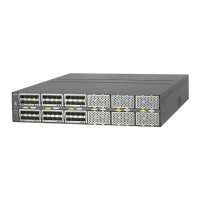
